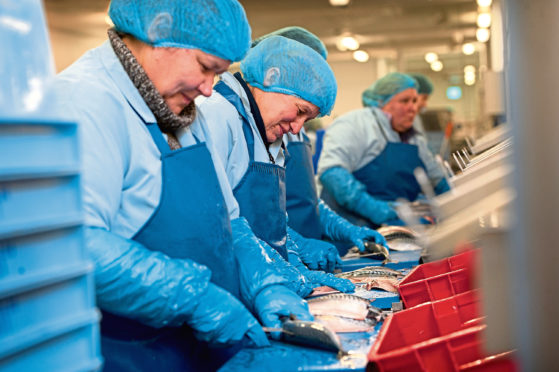Seafood processors are demanding continued tariff-free trade and access to labour in any Brexit deal reached between the UK and the EU.
Industry body the Scottish Seafood Association (SSA) has outlined the sector’s key objectives for the trade negotiations and beyond in its new 2020 Vision document.
SSA wants UK ministers to make the minimal impact on the sale of seafood in EU markets and the sector’s employment needs top priorities.
Jimmy Buchan, the association’s chief executive, said: “Fundamental to the processing sector will be the continuation of tariff-free trade with the EU and no introduction of non-trade barriers.
“In 2016, the UK exported £1.64 billion-worth of seafood, of which 71% went to EU countries.
“We are urging ministers in the forthcoming negotiations to balance the needs of the processing sector for continued unfettered access to EU markets with the expectations of the catching sector.” He added: “Equally importantly, the UK Government’s proposed points-based framework for immigration must take into account the sector’s employment needs.
“We are dependent upon migrant workers from other EEA (European Economic Area) countries, which make up 48% of the workforce as a whole and 70% in the north-east of Scotland, so it is vital that our members are able to gain continued access to this labour pool.”
The SSA is also calling for a “fit-for-purpose” replacement for the EU-backed European Maritime and Fisheries Fund, which will not be available to the UK after the Brexit transition period ends in December.
Meanwhile, the public body that supports the £10bn UK seafood industry, has launched a public consultation on the Responsible Fishing Ports Scheme (RFPS) which has been updated to apply to all UK fishing ports.
The RFPS is a voluntary programme to promote and encourage responsible operating practices within UK fishing ports and harbours, in order to give greater assurance and transparency to buyers and users of seafood landed in the UK.
Accreditation allows ports to show they follow good practice across five core areas: food safety and structural integrity; port and the working environment; care for the environment; care of the catch; and traceability.
The first phase of developing standard criteria was completed and approved in 2018, allowing large ports to be certified. Peterhead became the first port to achieve the new certification last year.
The scheme is said to have closed a certification gap in the seafood supply chain, making the UK a world leader in responsible sourcing.
Seafish technologist Marcus Jacklin said: “I’d encourage all interested stakeholders to take the opportunity to review the standard and submit any feedback now before the standard is finalised and released.”
The consultation runs until April 8.
